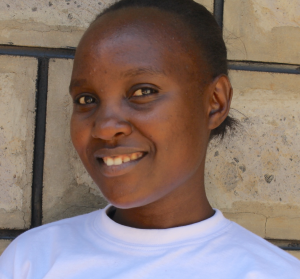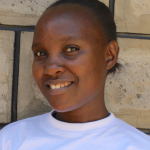Muleche Primary School opened in 1984 to serve students living in and nearby Shinyalu, Kenya. It has a total enrollment of 434 students, of which 225 are girls and 209 are boys.
The local government has found that parents of these students are extremely unsupportive when it comes to education. Many of the parents say that it's a waste of time if their children can just get by with menial labor jobs like they do.
Students arrive no later than 7am to begin a quick cleaning the school compound, sweeping classrooms, and cleaning latrines. Normal classes start at 8am and go until lunch. The day ends at 5pm.
Water
There is no water on school grounds. A teacher must take a group of students out into the community whenever they need water. Water is fetched from a slow moving river which looks more like a swamp. There are plants growing in the water, and it has a bad odor.
Some students crouch down at the banks to dip their containers under the water, while others wade in to where the water is deeper.
There is no alternative water storage at school, so water is kept in these small plastic jerrycans until it's used. The teachers refuse to drink this water and instead bring their own from home. Once, a teacher decided to be brave and try the water, and he suffered the same sicknesses his students suffer from.
Sanitation
There would be enough latrines for boys and girls if the majority of them weren't broken down. Though the boys' latrines were filthy, the girls' latrines were surprisingly clean. These girls are also the ones most excited for newer, safer latrines.
Though the school is cleaned by students every morning, this is a dry clean. Students refuse to make the trip to the river every morning just for cleaning, and opt to live in a dirty environment. If water was used to mop the classroom floors every morning, it would keep the dust down and prevent jiggers.
The school embraced handwashing at one point by setting up a station, but it is emptied quickly and sits unfilled in order to ration water.
Here's what we're going to do about it:
Training
There will be two days for teachers and students to meet at the school to learn about hygiene and sanitation practices. They will also attend sessions on the management and maintenance of their new rainwater catchment tank, latrines, and handwashing stations. We will use all of our training topics to empower participants to invest their time in positive behaviors that promote health, prolong life, and enable them to become more self-reliant citizens.
The facilitator will use PHAST (participatory hygiene and sanitation transformation), ABCD (asset-based community development), CTC (child to child), lectures, group discussions, and handouts to teach health topics and ways to promote good practices within the school. The CTC method will prepare students to lead other students into healthy habits, as well as kickstart a CTC club for the school.
Handwashing Stations
The two handwashing stations are 50-liter plastic barrels on metal stands, and each has a tap to conserve water. These are often delivered by hygiene and sanitation training so they can be used for demonstrations, but always arrive by a project’s completion.
The CTC club will be in charge of filling these stations with water, and will ensure that there is always a cleaning agent like soap or ash.
VIP Latrines
Two triple-door latrines will be constructed with local materials that the school will help gather. Three doors will be set aside for each gender. And with a new source of water on school grounds, students and staff should have enough to keep these new latrines clean.
Rainwater Catchment Tank
A 50,000-liter rainwater catchment tank will help alleviate the water crisis at this school. The school will also help gather the needed materials such as sand, rocks, and water from the river for mixing cement. Once finished, this tank can begin catching rainfall that will be used by the school’s students and staff. Students will no longer waste valuable time journeying back and forth to fetch dirty water.
We and the school strongly believe that with this assistance, standards will significantly improve. These higher standards will translate to better academic performance for these little scholars!



 Rehabilitation Project
Rehabilitation Project



















